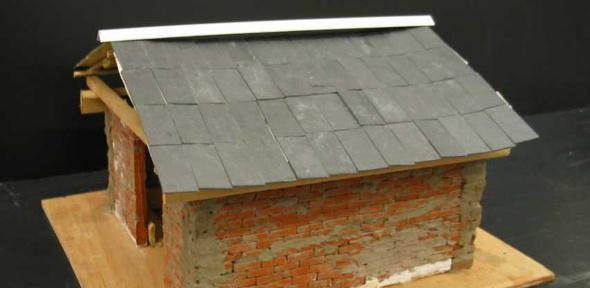
The Asian tsunami of 26 December 2004 showed the catastrophic devastation that could be caused by a tsunami to human lives, infrastructure and economy. The tsunami claimed more than 220,000 lives and made almost 800,000 people homeless. The total economic cost of the catastrophe is estimated to be more than £7·5 billion. A paper by Dr Indrasenan Thusyanthan, former Lecturer in the Geotechnical Research Group and Dr Gopal Madabhushi, Reader in Geotechnical Engineering presents the results of model tests that compare the impact of a tsunami wave on a typical coastal house with that on a new ‘tsunami resistant’ design developed in the USA and now built in Sri Lanka. The paper has won the Bill Curtin prize awarded by the Institution of Civil Engineers (ICE) for the Best Paper in the ICE Civil Engineering magazine.
While earthquakes and tsunamis are inevitable forces of nature, it is possible to be better prepared for them so that the damage to infrastructure can be minimised. To save lives, efficient tsunami- warning systems need to be put in place for the evacuation of people from coastal areas. The physical, economic and financial loss to the coastal community can also be reduced by having tsunami resistant designs for houses and other infrastructure in the region.
Understanding tsunami wave loading on coastal houses is important to improve the design of coastal structures. The paper presents the results of physical model tests of coastal houses subjected to tsunami wave loading in a 4·5 m long wave tank. 1:25 scale models of a typical Sri Lankan coastal house and a new house design were tested in the tank, in which the near-shore tsunami wave conditions were created.
The new house design, named the ‘tsunami-resistant house’, was designed by a student initiative at Harvard Design School in collaboration with the Massachusetts Institute of Technology (MIT). Instead of four solid walls with small openings for doors and windows used in conventional design, the new design has centrally placed doors facing the sea and the corner walls are made of reinforced concrete. The basic design concept was that these houses would allow the passage of the tsunami wave, through the central part of the house, without attracting too much hydrodynamic loading.
The Bill Curtin Medal was instituted in 1992 following a donation by Curtins Consulting Engineers to commemorate the late W G Curtin's contribution to engineering. The medal is awarded annually for the best paper published by the ICE describing innovative design in civil engineering.
For further information please contact:
Dr Gopal Madabhushi email: mspg1@eng.cam.ac.uk
Dr Indrasenan Thusyanthan email: it206@cam.ac.uk

